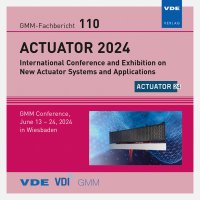The Application of Piezoelectric-Driven Actuators in Bone Conduction Devices
Konferenz: ACTUATOR 2024 - International Conference and Exhibition on New Actuator Systems and Applications
13.06.2024-14.06.2024 in Wiesbaden, Germany
Tagungsband: GMM-Fb. 110: ACTUATOR 2024
Seiten: 4Sprache: EnglischTyp: PDF
Autoren:
Lieber, Julia; Reininger, Alexander
Inhalt:
Bone conduction devices use an actuator that converts electrical signals into mechanical vibrations to transfer sound through skull bone to the cochlea. The design of this core element has a great impact on the overall device size and complexity. Piezo-based actuators offer a major benefit in size, slim shape and mass compared to conventional electromagnetic actuators. For this rationale, an elaborated piezoelectric transducer was tested for integration in the field of bone conduction. The actuator’s impedance and response to audio signals was measured under mimicking the conditions for sound transmission through bone. In addition, the output force level (OFL) was measured when the transducer was attached to bone conduction device (BCD) electronics. For evaluation of proper signal conversion, the total harmonic distortion (THD) was measured. The piezo transducer has a capacitive behavior and resonates at 1030 Hz. It properly converts electrical audio signals at frequencies that are sensitive to speech with a THD below 1% between 600 and 4000 Hz. BCD electronics, modified for the capacitive transducer was found to be compatible for frequencies between 800 and 4000 Hz with a THD below 3%. With a measured and simulated pure tone average at the frequencies 500, 1000 and 2000 Hz (PTA3) OFL of 75 dBmuN, the output is still too low for the purpose of rehabilitation, compared to existing devices. With ongoing optimizations, aiming to increase OFL and reduce distortion at low frequencies, the potential of using piezoelectric actuators in bone conduction rehabilitation devices is rising.


